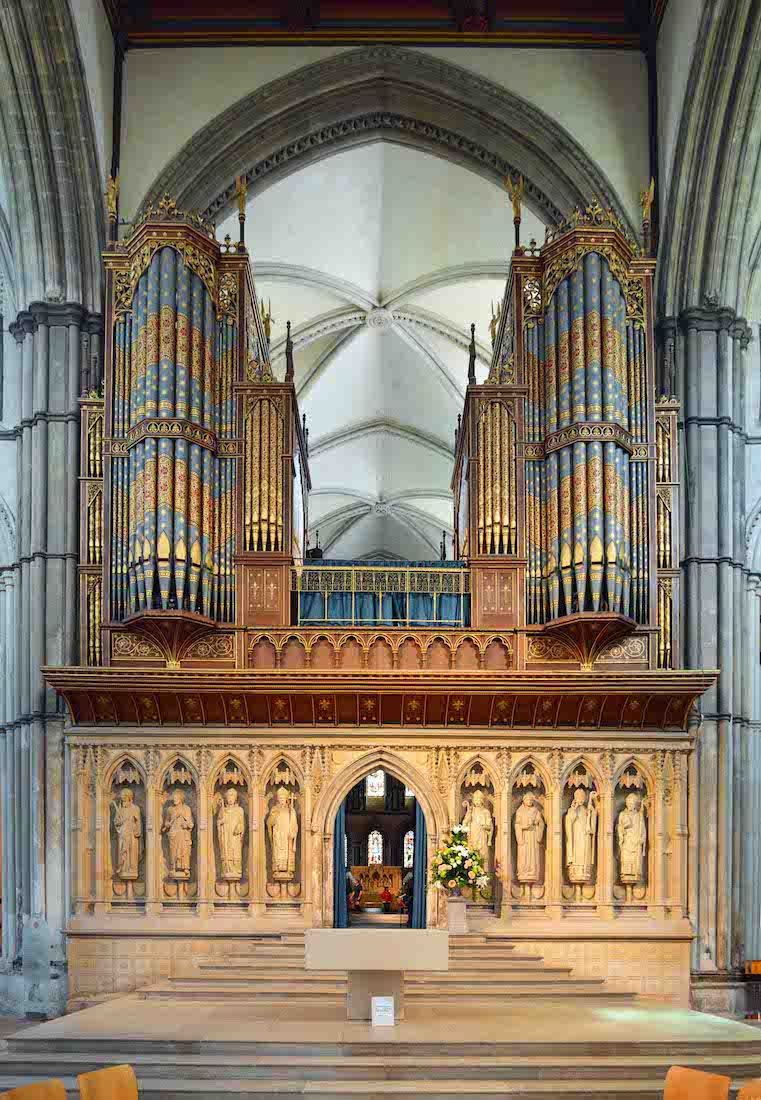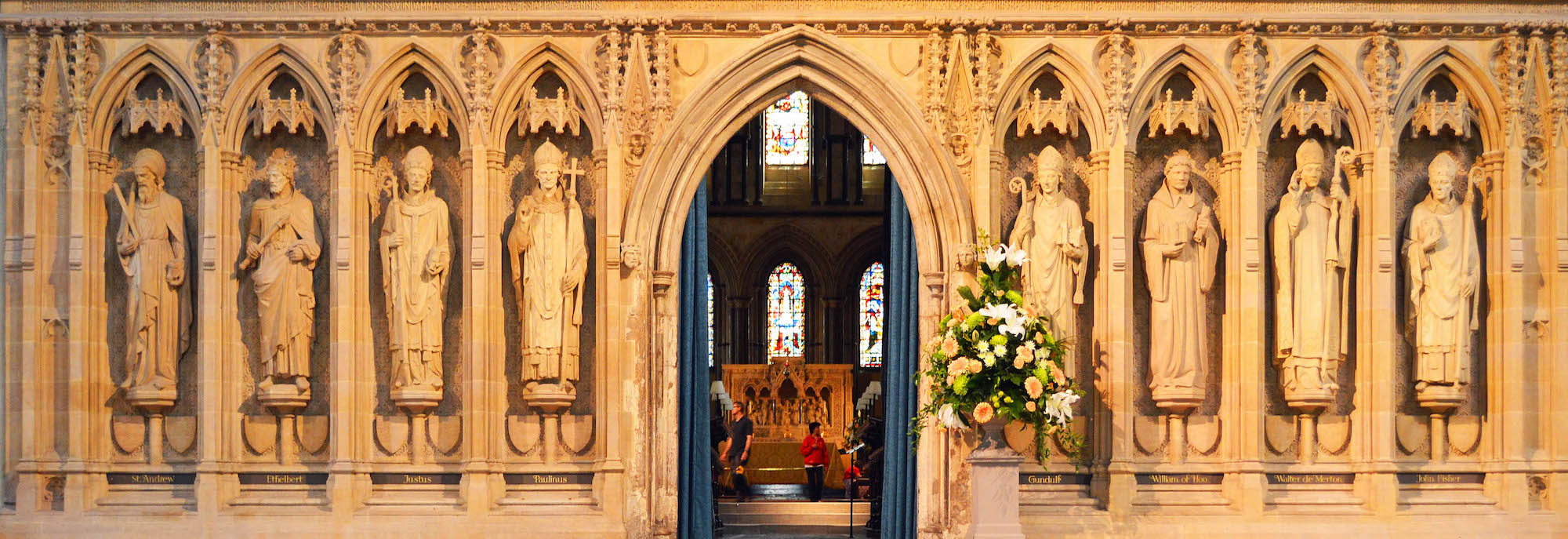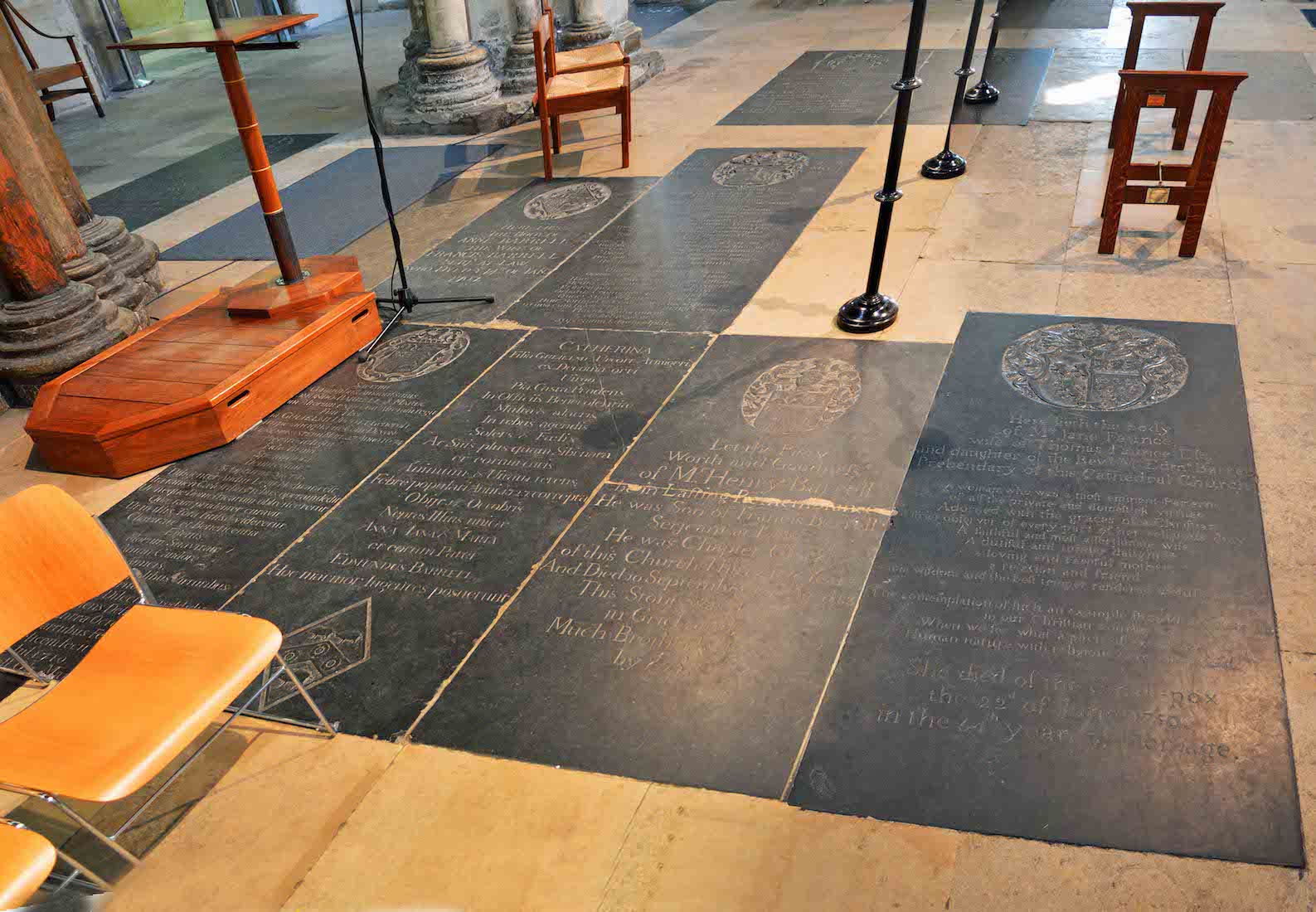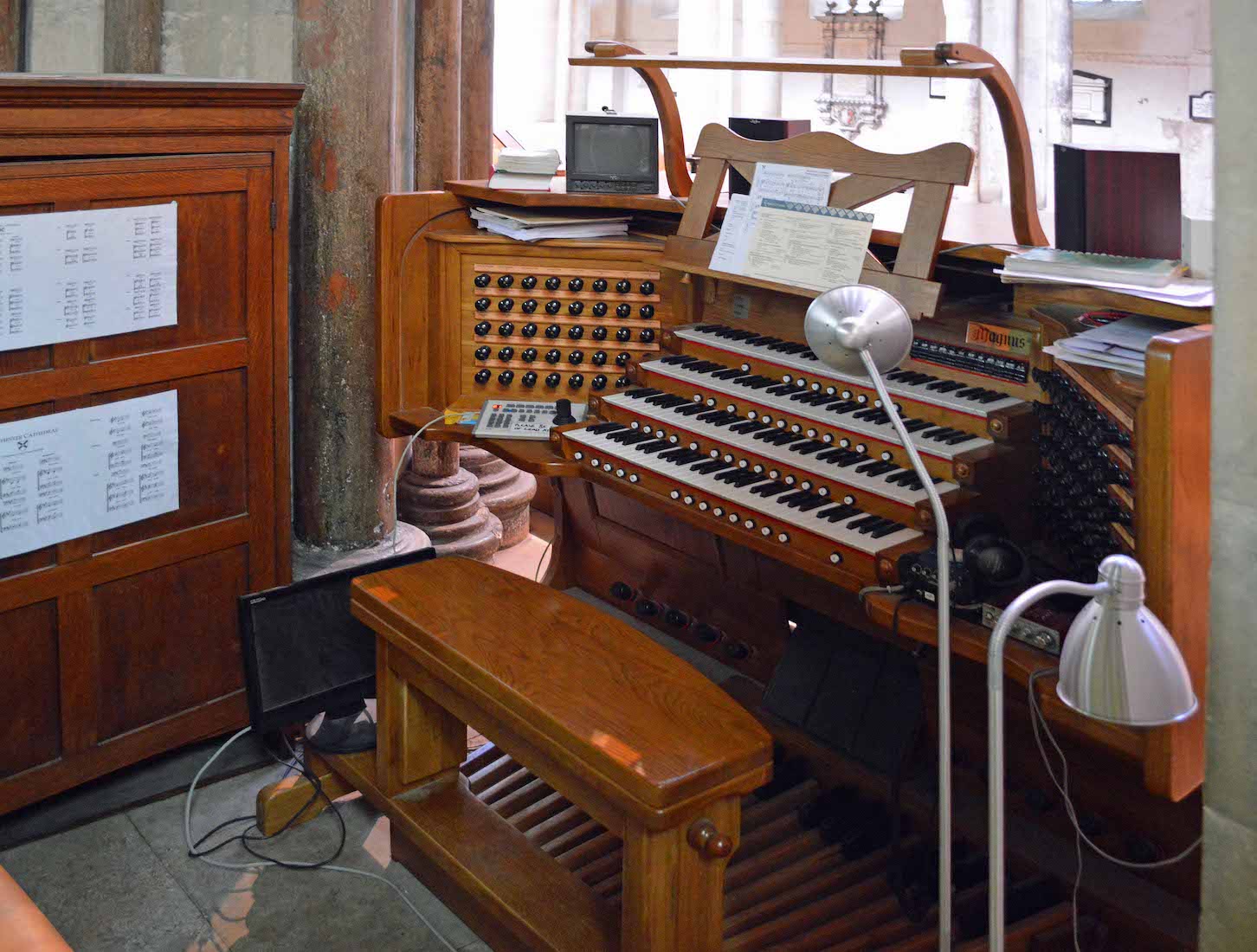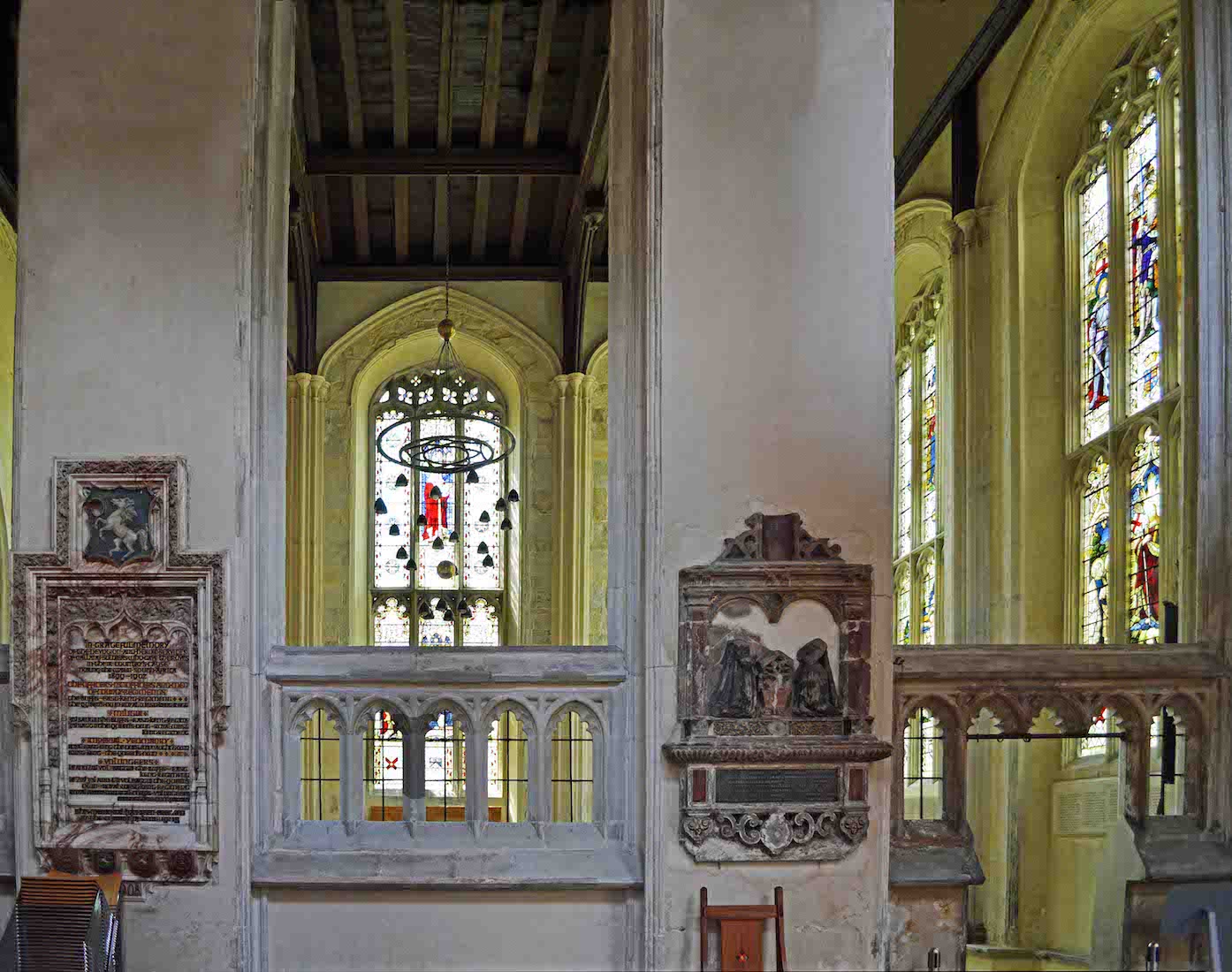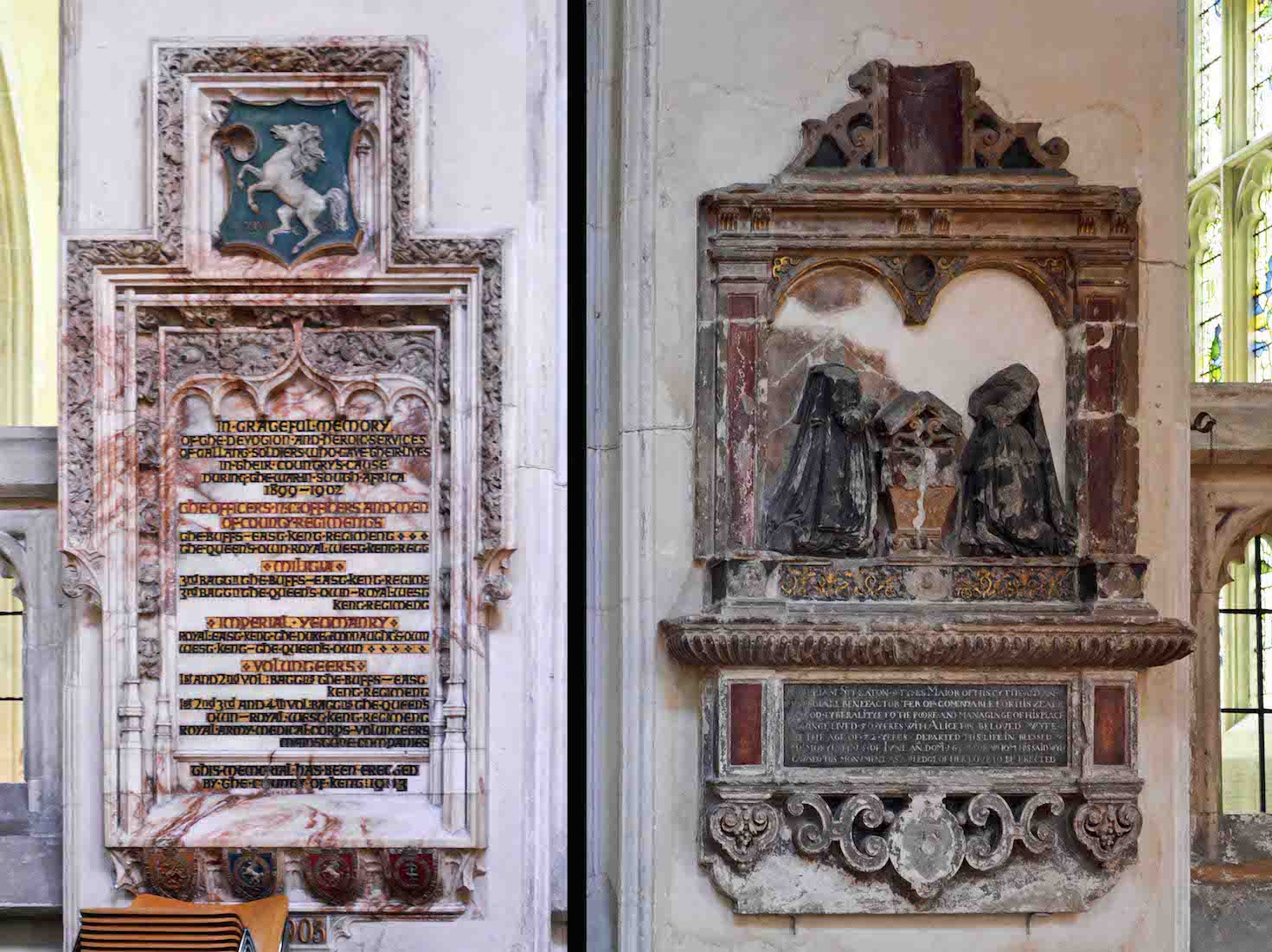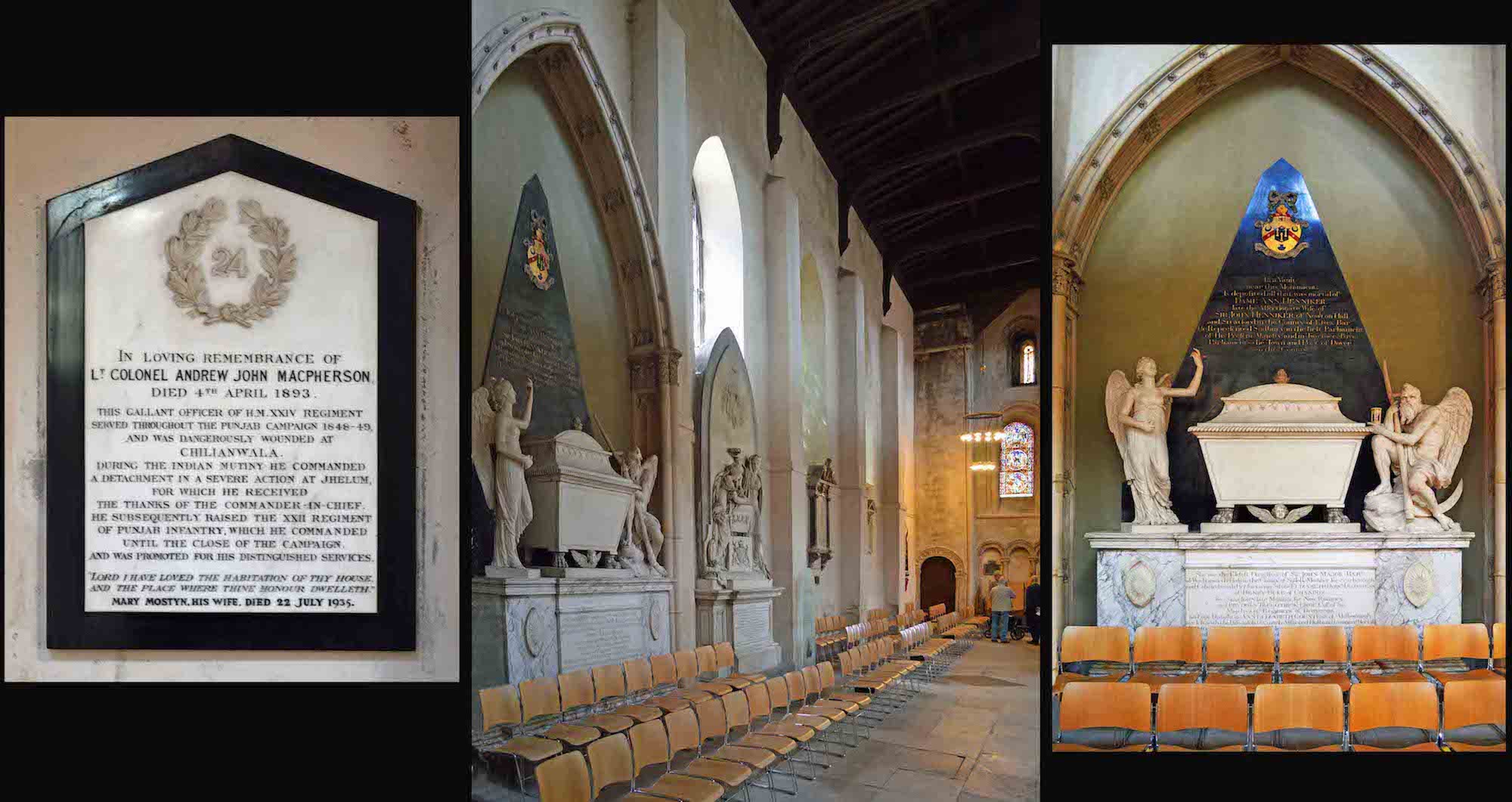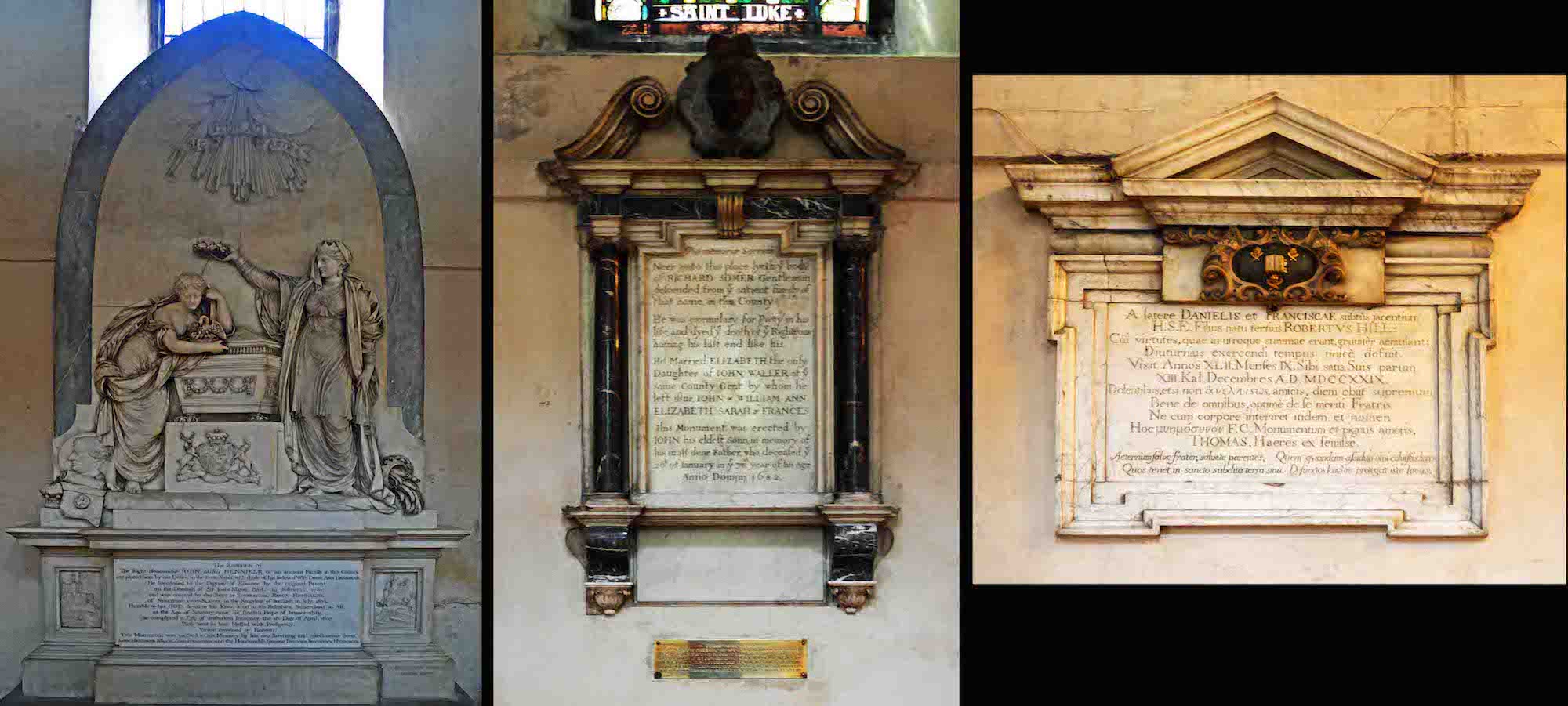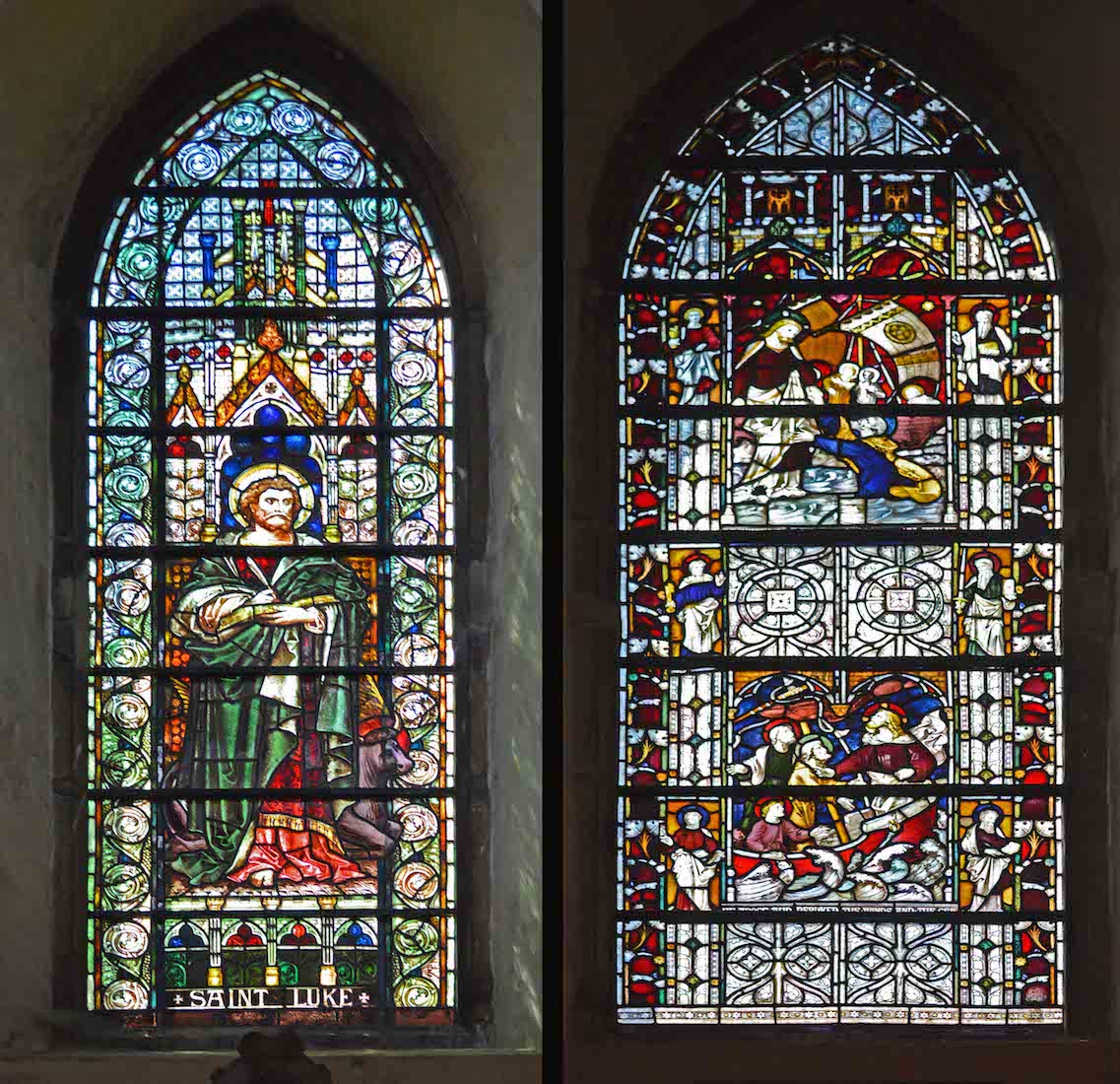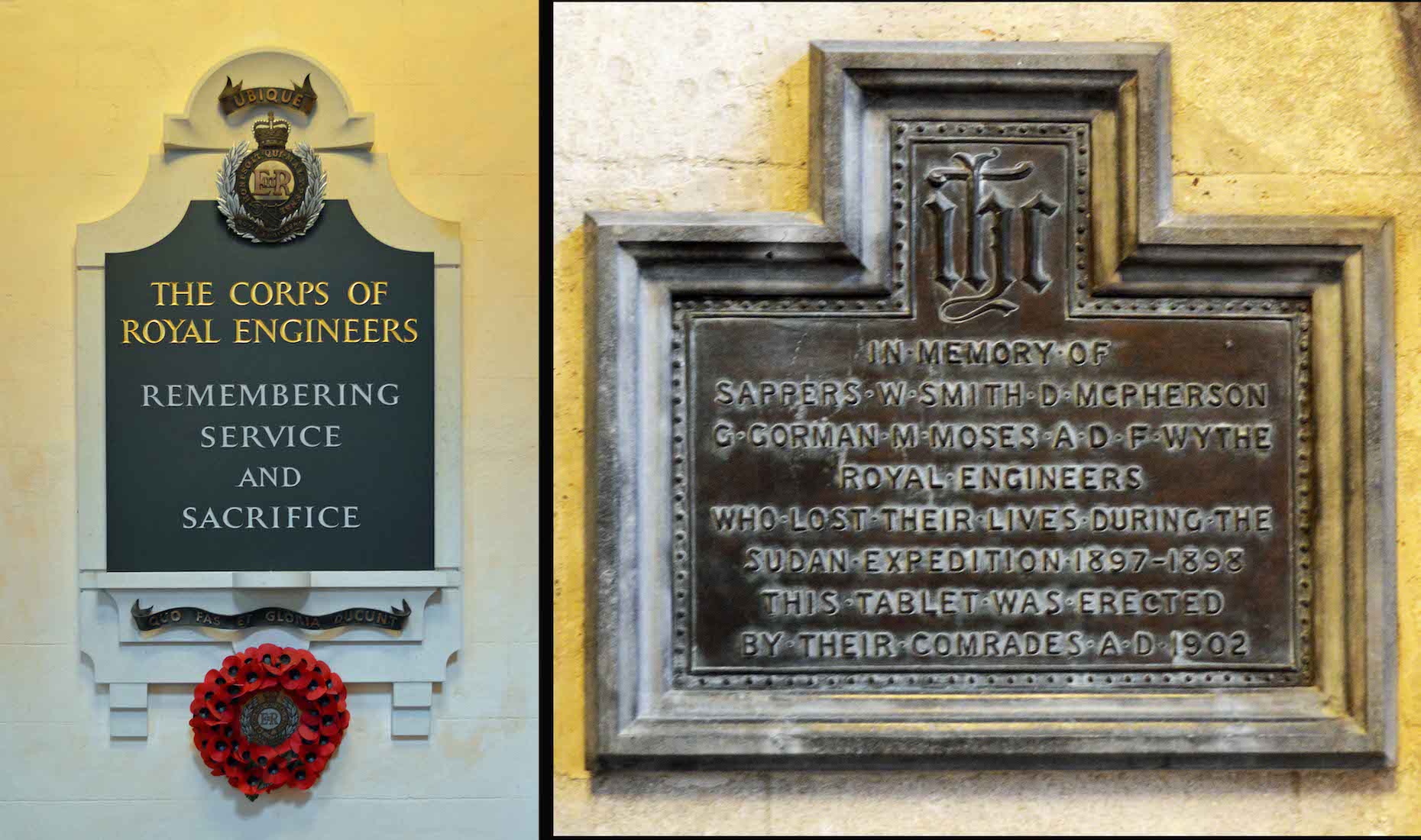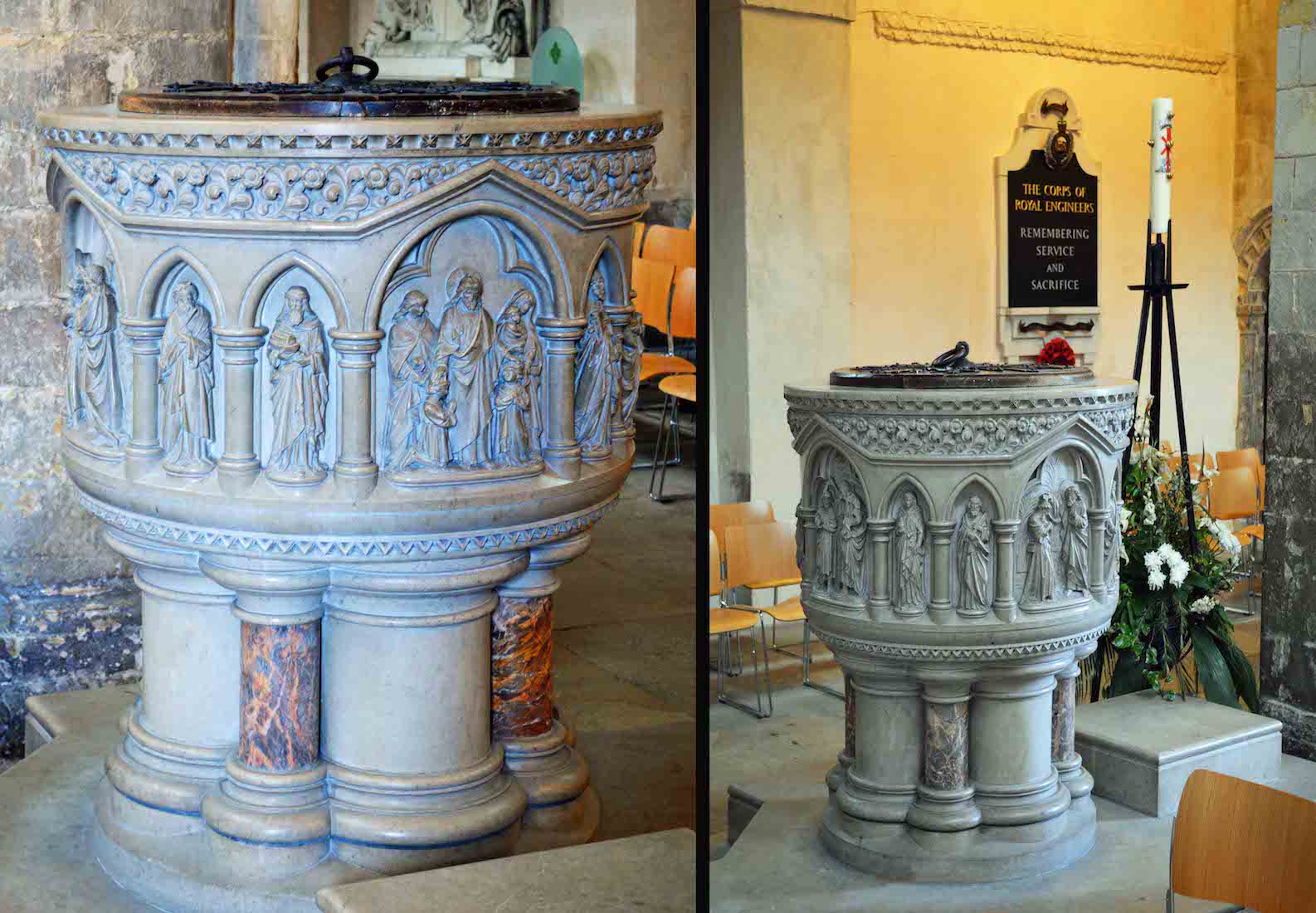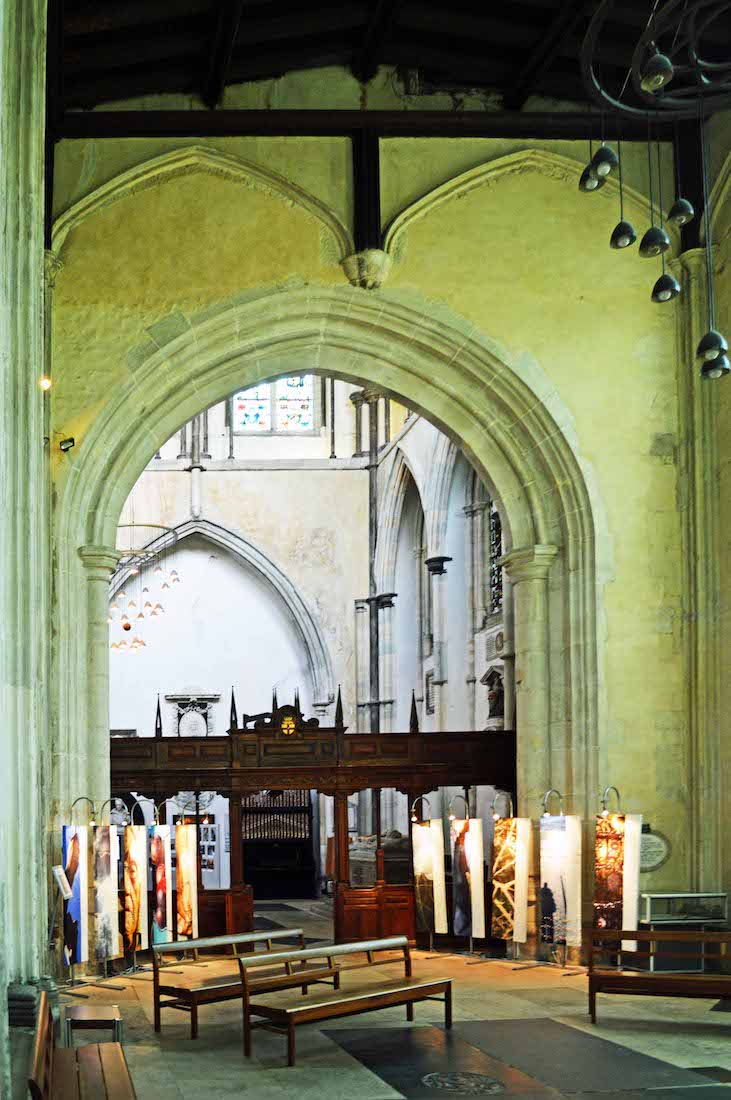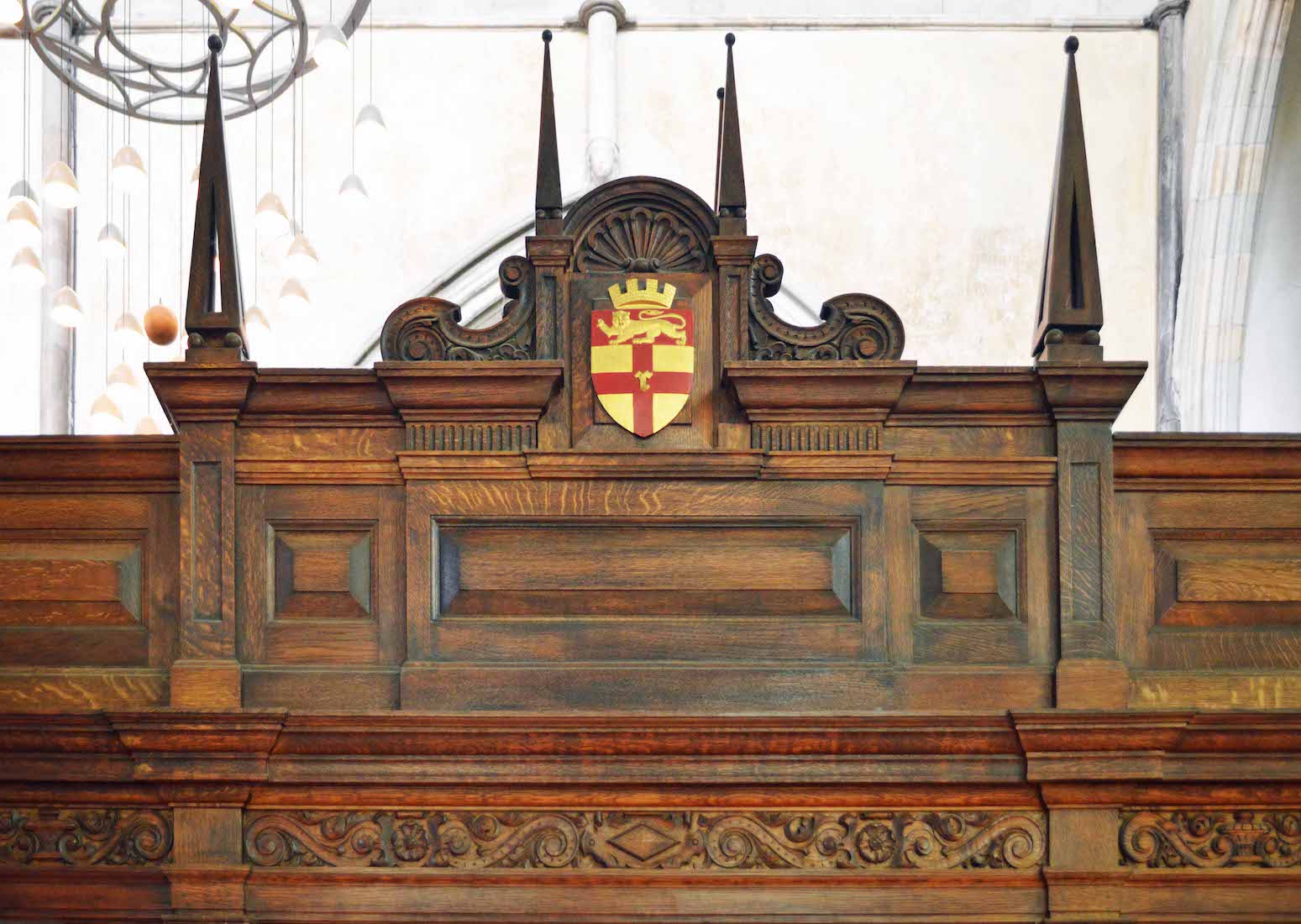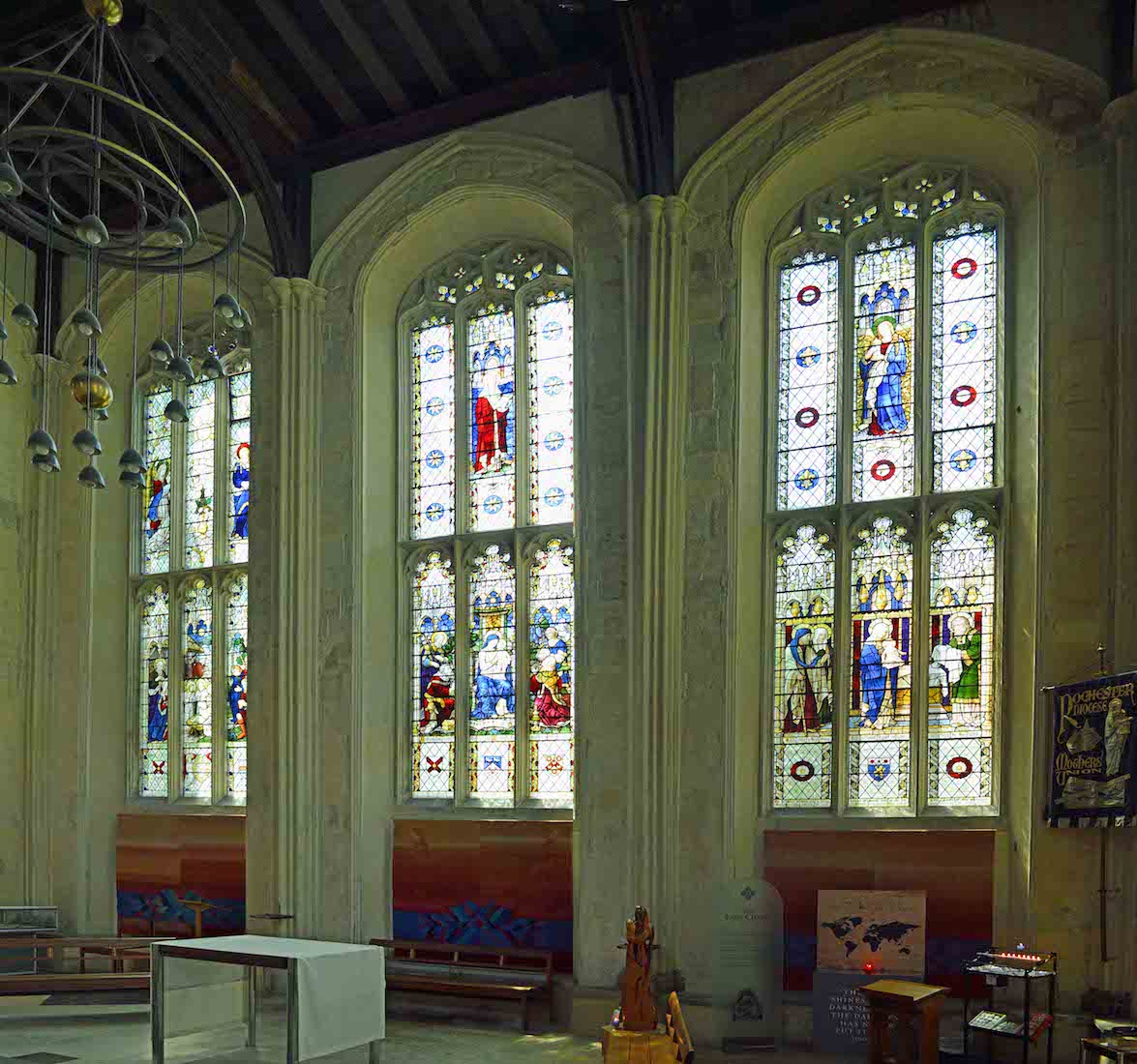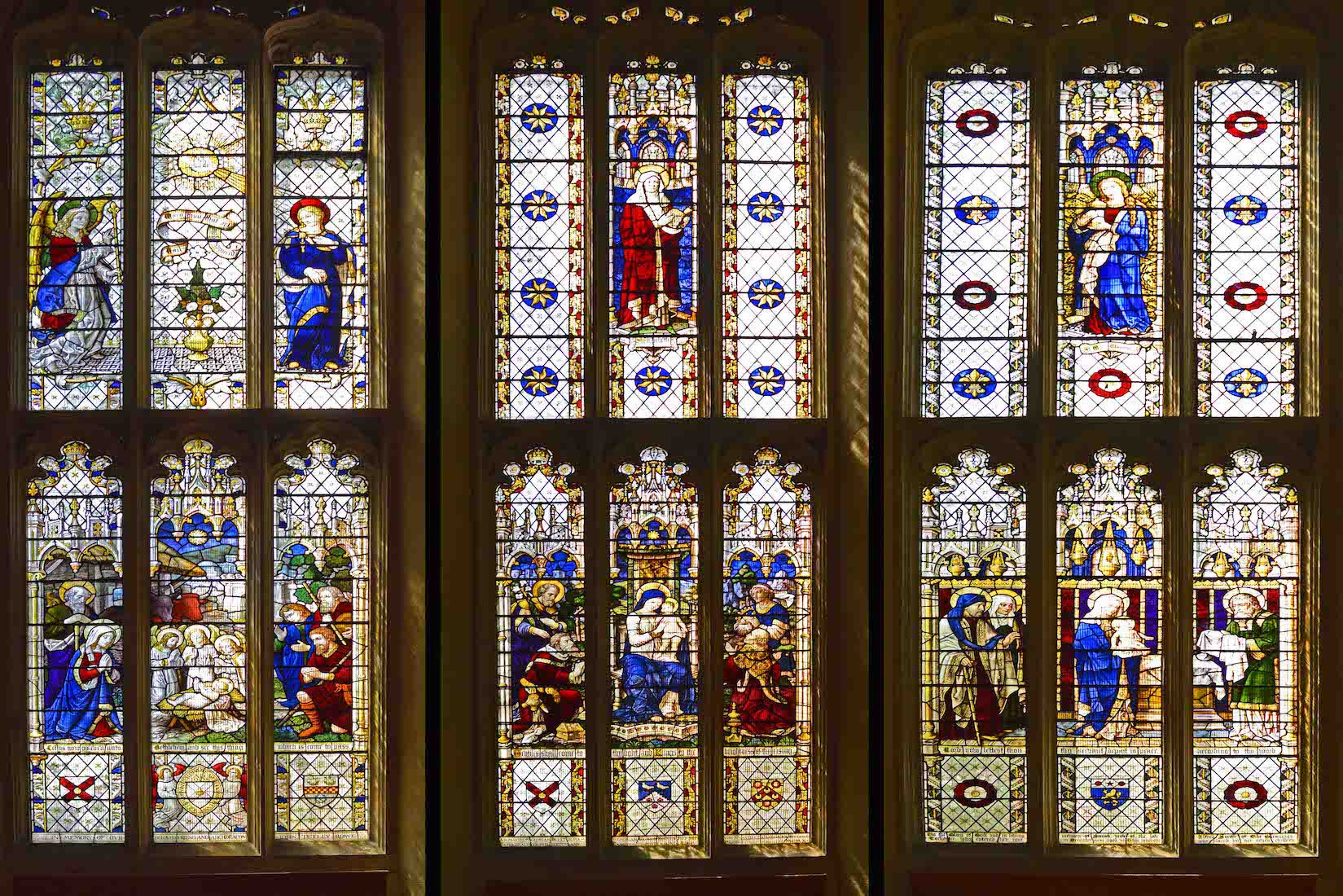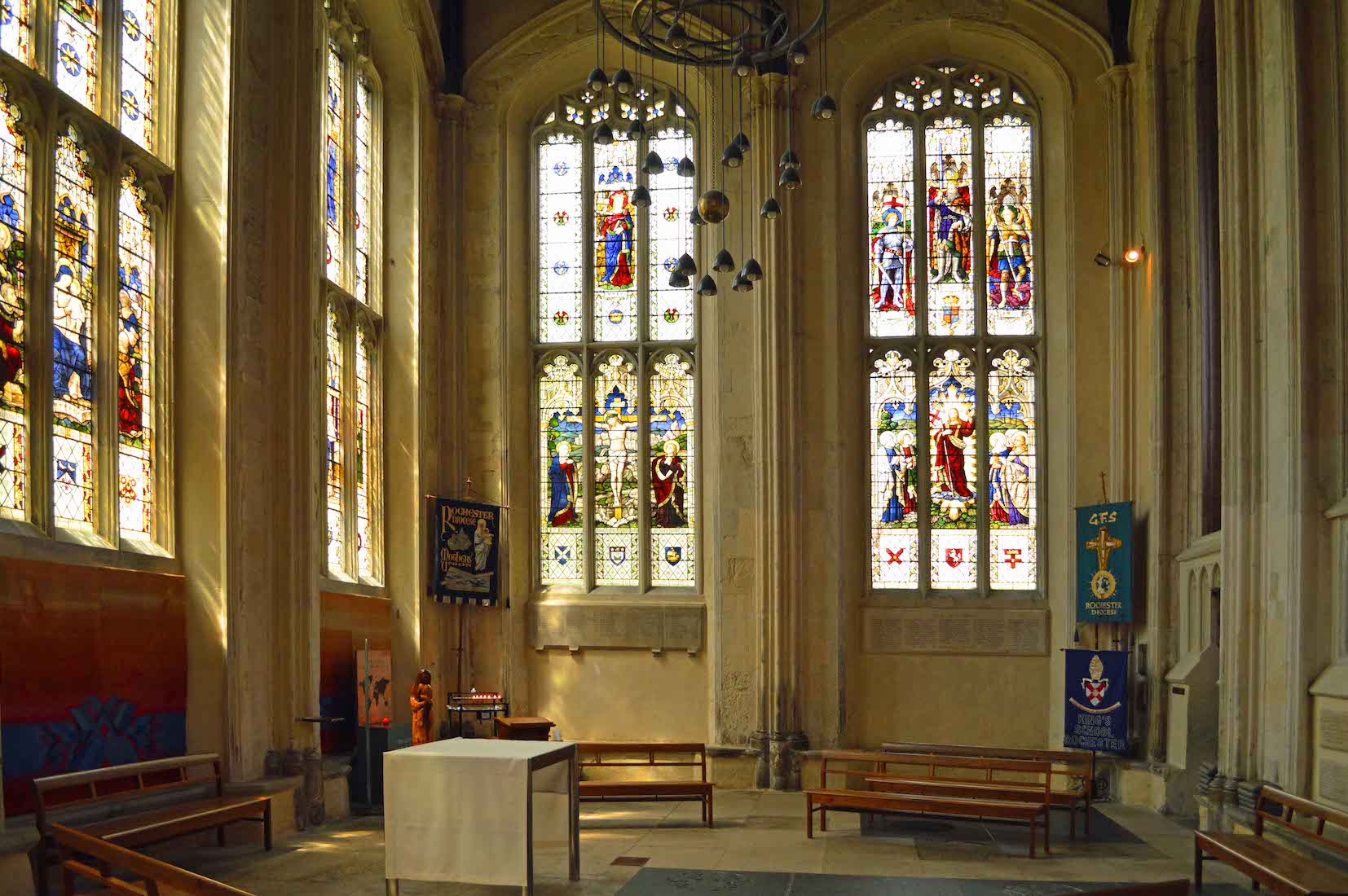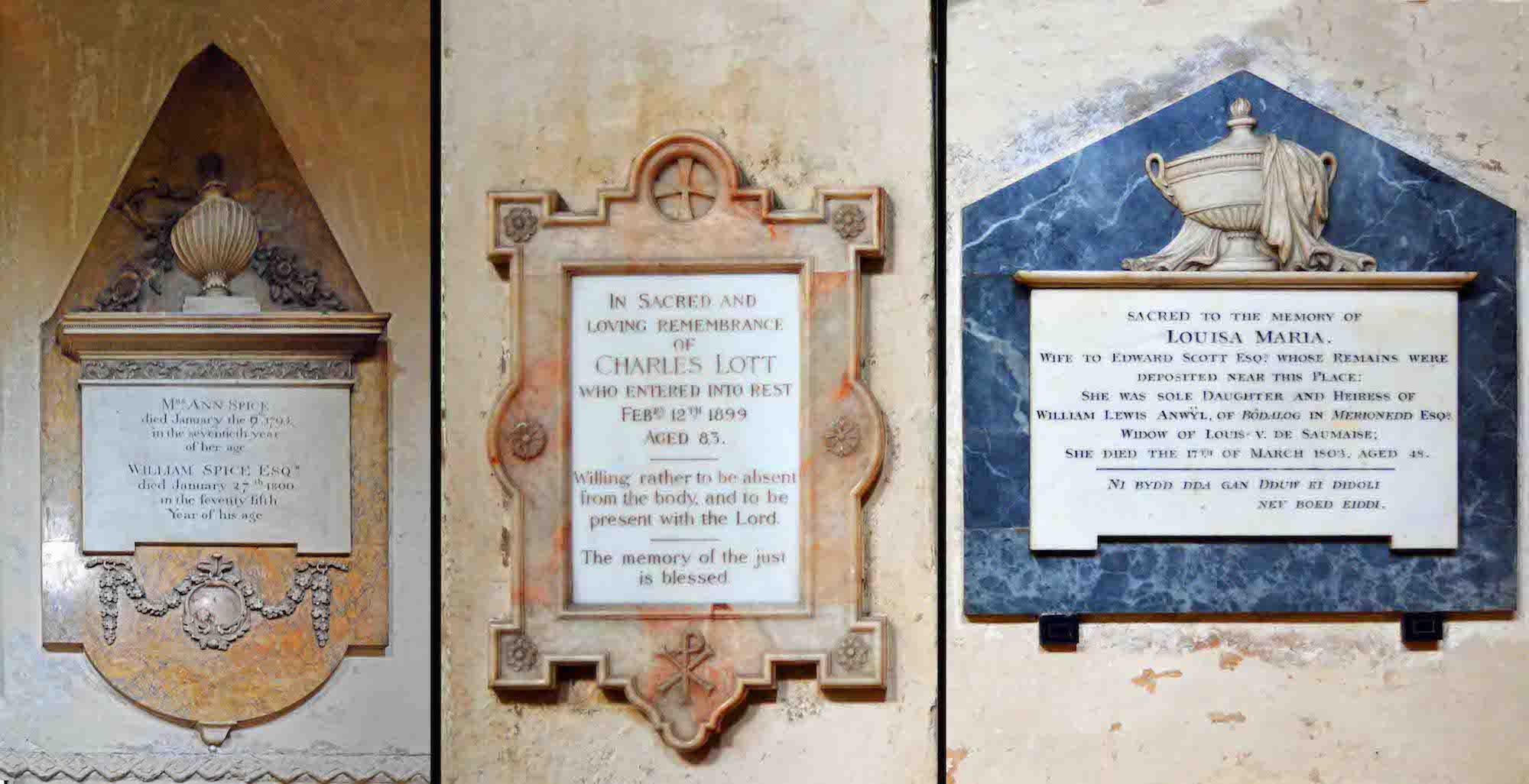
Here are remembered William and Ann Spice; Charles Lott; and Louisa Maria Scott. PLAN
42. CROSSING
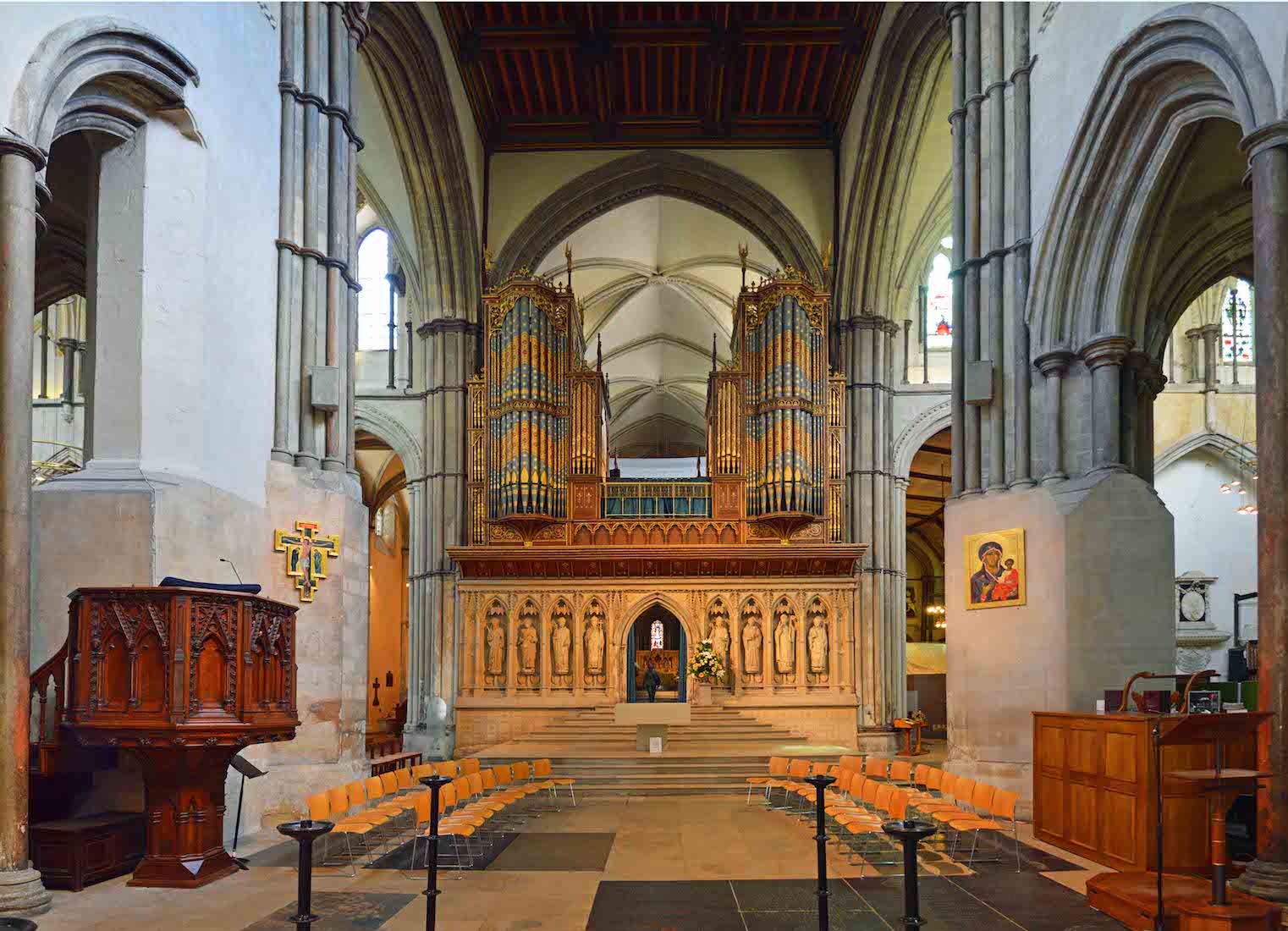
We stand at the crossing. The pulpit is at left, a lectern at right, and there is an icon behind each. Ahead of us is the pipe organ with a wonderful screen of carved figures below, and through the central doorway a glimpse of further secrets beyond.
43. PULPIT AND ICON
The pulpit is a graceful carved wooden structure. The icon shows Jesus on the Cross with John and Mary standing by. There is a Latin inscription at the top of the Cross which reads: Jesus of Nazareth, King of the Jews. The icon is by famous Russian iconographer Sergei Fyodorov.
44. ORGAN AND SCREEN
The magnificent organ casing and pipes were designed by the architect Gilbert Scott during his substantial restoration work in the 1870s. The pulpitum screen below is a memorial to Dean Scott (Dean 1870–1887). It features eight figures of special significance to Rochester. The central altar is in the foreground, and the high altar can just be seen through the doorway.
45. PULPITUM SCREEN
The figures of the pulpitum screen include Bishop John Fisher, one of two Rochester Bishops martyred during the course of the religious and political upheavals of the Reformation. Fisher was beheaded on the orders of Henry VIII for refusing to accept Henry’s supremacy over the English Church.
46. VIRGIN AND CHILD ICON
This icon depicting the Virgin Mary and Christ is by Ann Welch. The figures look decidedly African! The two icons reflect the former name of the Cathedral: the Cathedral Church of Christ and the Blessed Virgin Mary.
47. TOMBSTONES
In the crossing area at the East end of the nave, a number of black tombstones are inset into the floor. Some of the names are Jane Faunce, M. Henry Barrell, and Anne Barrell.
48. ORGAN CONSOLE
The organ dates from 1791, but has been modified several times since, with the last major rebuild in 1989. There are now 88 stops and 3508 pipes.
49. THROUGH TO THE LADY CHAPEL
We now proceed up the South aisle of the nave. We shall return to the Lady Chapel a little later.
50. TWO MEMORIALS
The memorial at left is to those who gave their lives in South Africa during the 1899 – 1902 War. The more delapidated memorial at right is in memory of Major William Smeaton.
51. SOUTH NAVE AISLE
The tablet at left remembers Colonel Andrew John Macpherson who served in India. There are two larger memorials on this aisle. The first is in memory of Dame Ann Henniker, wife of Sir John Henniker, she died in 1792 aged 65. The memorial was sculpted by Thomas Banks in Coade Stone, an ‘artificial’ ceramic stone, featuring the characters of Time and Eternity.
52. THREE MEMORIALS
Next is a large memorial to John, Lord Henniker who was a British merchant and Member of Parliament. Then memorials to Richard Somer, and Robert Hill who died in 1729.
53. SOUTH NAVE WINDOWS
There are only two stained glass windows on this wall of the nave. The first depicts St Luke. The second shows two scenes from the Gospel story, of Peter walking on water and Jesus stilling the storm.
54. ROYAL ENGINEERS
The final two tablets on this wall are a general memorial to the Corps of Royal Engineers, and one in memory of four men from the Corps who lost their lives during the Sudan expedition in 1897 – 1898.
55. FONT AND CANDLE
The font is in Victorian Gothic revival style. Sculptor Thomas Earp has created a design of columns and Gothic arches framing Biblical scenes and characters associated with Baptism. The Paschal Candle is a reminder of the Old Testament passover.
57. ARCH DETAIL
The attractive carved arch carries the Rochester coat of arms on the Chapel side.
58. LADY CHAPEL SOUTH WALL
The Lady Chapel has some lovely stained glass. In the foreground is a wooden carving of the Madonna, and we notice a banner at right.
59. CHAPEL SOUTH WINDOWS
In detail, the South windows show (from left): the Annunciation and Nativity; the Adoration of the Magi; The Presentation in the Temple.
60. CHAPEL VIEW
Looking towards the West wall we see two more fine windows, the carved sculpture, and three banners. This is a peaceful place for contemplation.


